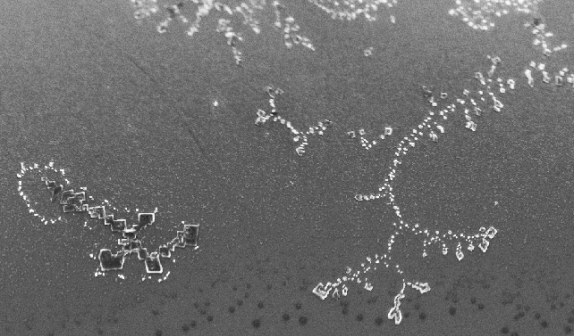
Micro-organisms represent an incredible source of wealth for the whole biological world, plants, animals and men. They were the first life-form to appear on the planet and thanks to them our planet has evolved to look like it does today. Where the soil is healthy and lively, there is an enormous amount of micro-organisms that co-ordinate the cycle of matter, the availability of nutritional elements and the nutrition of plants and animals. Their importance is imperative, as there could be no life without them. They are also vital for the ripening of fruit and vegetables, as well as for the formation of colours and tastes. Erroneously, they are often blamed for illness in both flora and fauna. While there are many parasitic micro-organisms, their danger is to be blamed more on circumstances that allow them to prosper rather than on themselves. They can therefore be considered instruments or indicators of something that isn't working well, and their action can be seen as the environment's answer to the problem. It is therefore often wrong to use parasites as scapegoats for illnesses, because often the real problem is what lies beneath. Currently there are many parasitic diseases that attack plants, animals and men that continue changing and evolving, and just as science changes and evolves to fight these micro-organisms, only more of them are discovered.
The balance in the micro-organism world and its harmonic development lies in the great amount of variety of species that exist: the more species there are, the more control they can have on each other, reducing the risk of parasitic development that would provoke damage and alteration to others. Sadly we've been brought up to believe that a healthy environment is a sterile one, while in fact a healthy hygiene is based on a balanced micro-biotic one. This has been translated into products and practices that have fought and manipulated the micro-organic world, ignoring the natural capacity of living along-side them, have gone ahead and made certain harmful micro-organisms harmless.
The spread use of chemical pesticides and fertilizers in agriculture, as well as the indiscriminate use of antibiotics has greatly inhibited the development and growth of new micro-organisms in both number and species, making us more and more dependant on chemical products and generating monsters that are more and more resistant.
Effective Micro-organisms, or EM are the result of research and experiments conducted in the 1980s by a Japanese Gardening Professor at the University of Ryukyu, Teruo Higa.
The results of these experiments weren't only surprising, but also opened new horizons in many diverse fields such as agriculture, zootechnics, waste management, health, wellness and water treatment. In Japan, they are being used with very positive results to un-pollute from radioactivity, as after the Fukushima accident.
Micro-organisms can be both aerobic and anaerobic, with different behaviours and activities that by working in a synergy promote the development and health of living organisms through:
- a powerful anti-oxidising action
- an efficient anti-ionizing action
- an unprecedented energy conversion through the activation of regeneration processes and obstruction of degenerative processes.
In wellness centres, EM technology allows to efficiently slow down the ageing process by stopping the formation of free radicals to support both the contrasting action of certain pathologies, as well as a general support of wellness.
These can be used both directly simply by dissolving them in water as well with manufactures built with the addition of these micro-organisms.
In this way, swimming pools, seats and walls can become active elements which on the contact with water and people can have a regenerating function, the water itself as well as muds and skincare products can be very satisfying thanks to this technology.
On these principles, the first EM wellness centre was built in Japan in Okinawa, in Hotel Costa Vista.
Photo: salt crystals obtained with EM treated water.


